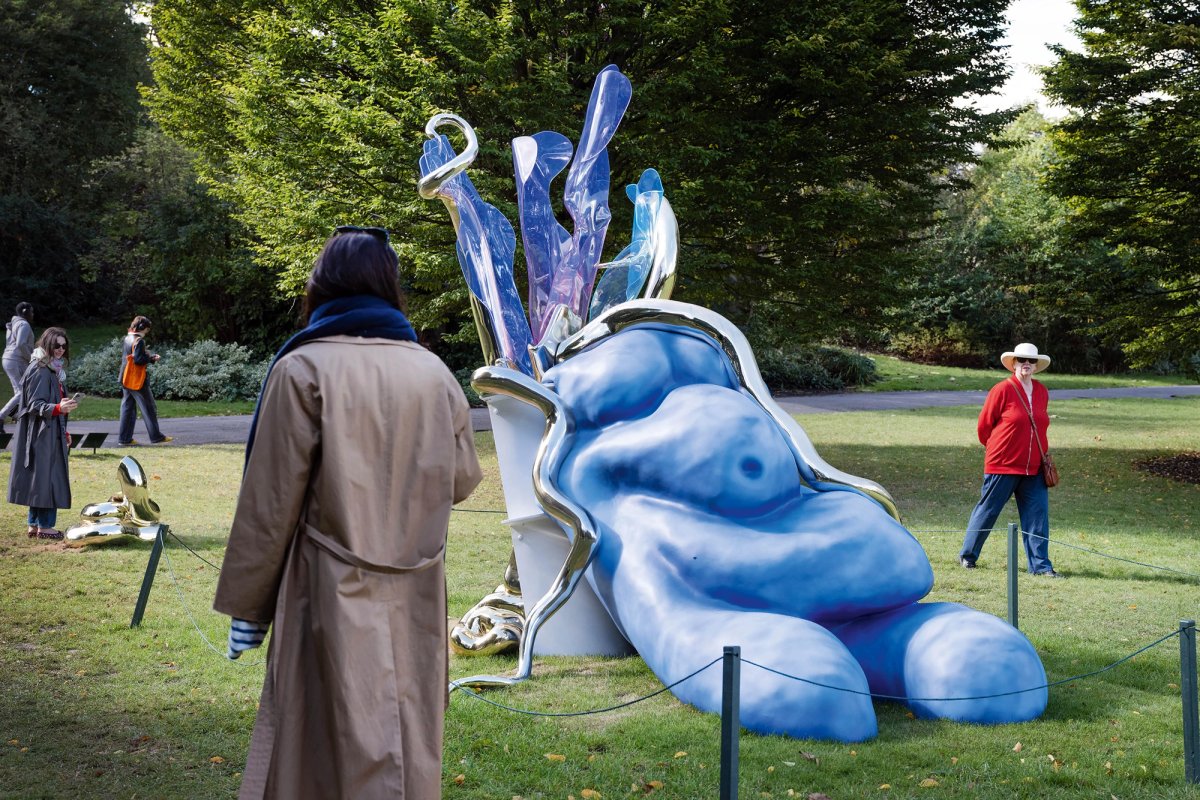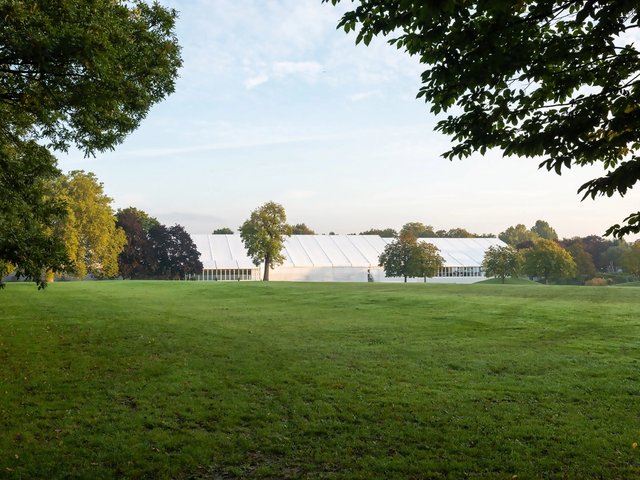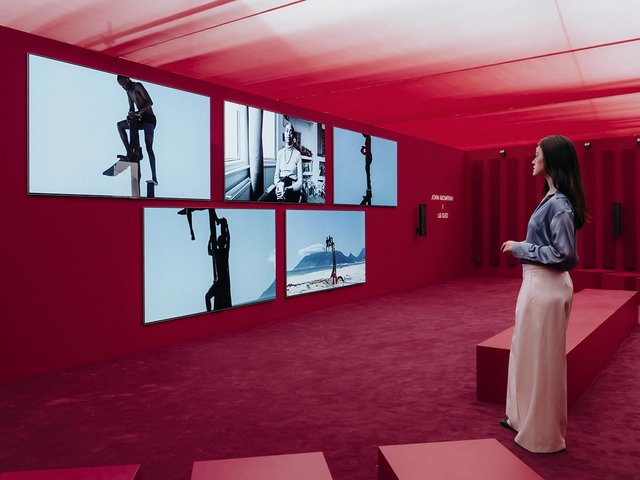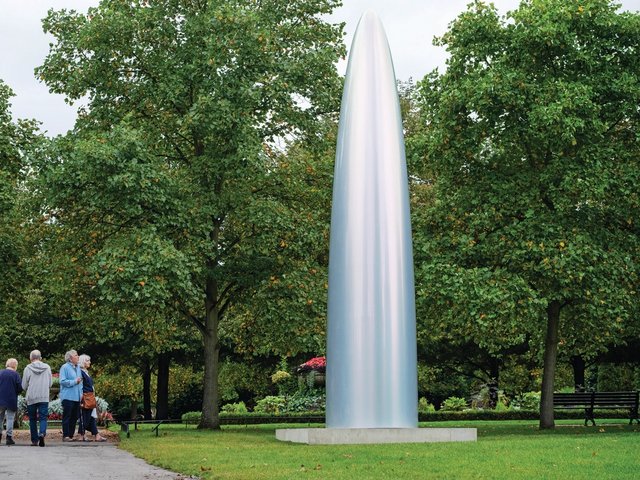“We are looking at expanded notions of sculpture,” says Fatos Üstek, the curator of this year’s Frieze Sculpture. “So taking sculpture out of its connotations of statues and monuments, and looking at artists who are pushing the boundaries of what sculpture can be.”
Half of the 22 artists on show in the English Gardens, next to the Frieze London tent, have created new works. Many of the sculptures feel like they are alive, Üstek says, “but when we look at them, they freeze.” Here, she tells us about seven key works.
Libby Heaney
Ent- (non-earthly delights) (2024)
Libby Heaney’s work (above) explores the transformative changes that quantum computing is expected to wreak on the future of everyday life. This is Heaney’s first ever physical sculpture, let alone her first outdoor sculpture. It was conceived in the digital realm and visitors can activate it in augmented reality using QR codes.
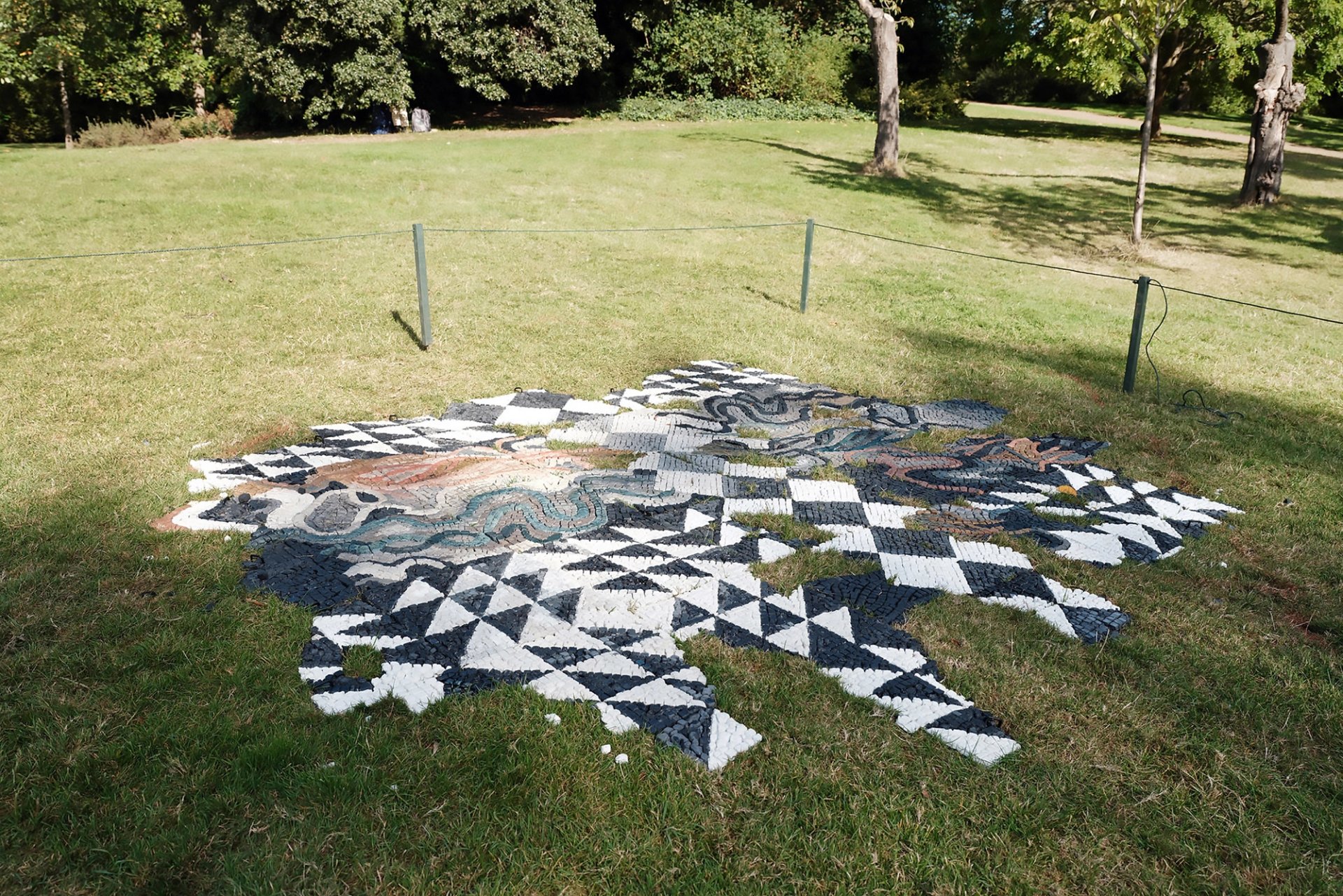
Nika Neelova, Crude Hints (2024) Linda Nylind/Frieze
Nika Neelova
Crude Hints (2024)
Nika Neelova’s mosaic-like floor is made up of 14,000 handcarved stones. It is set into the grass as if we’ve stumbled upon flooring from Roman times: it could be a past dwelling or a future one. It is almost a portrait of London because all the stones are collected from construction sites and streets across the city. Neelova took all the materials that she found—marble, dust, bricks—and cast them into stones. It also has the outline of London, with two serpents which could be the River Thames.

Theaster Gates, The Duet (2023) Linda Nylind/Frieze
Theaster Gates
The Duet (2023)
This work is made up of two vessels. One is very similar to the bollards used to moor ships—these bollards are actually the objects that hold the relationship between the ship and the land. The other one is a larger version of the clay discs that were used to mark the boundaries of land ownership or, sometimes, graveyards. So these vessels are not only sculptures in themselves but also hold everything around them in relationship with [everything else].
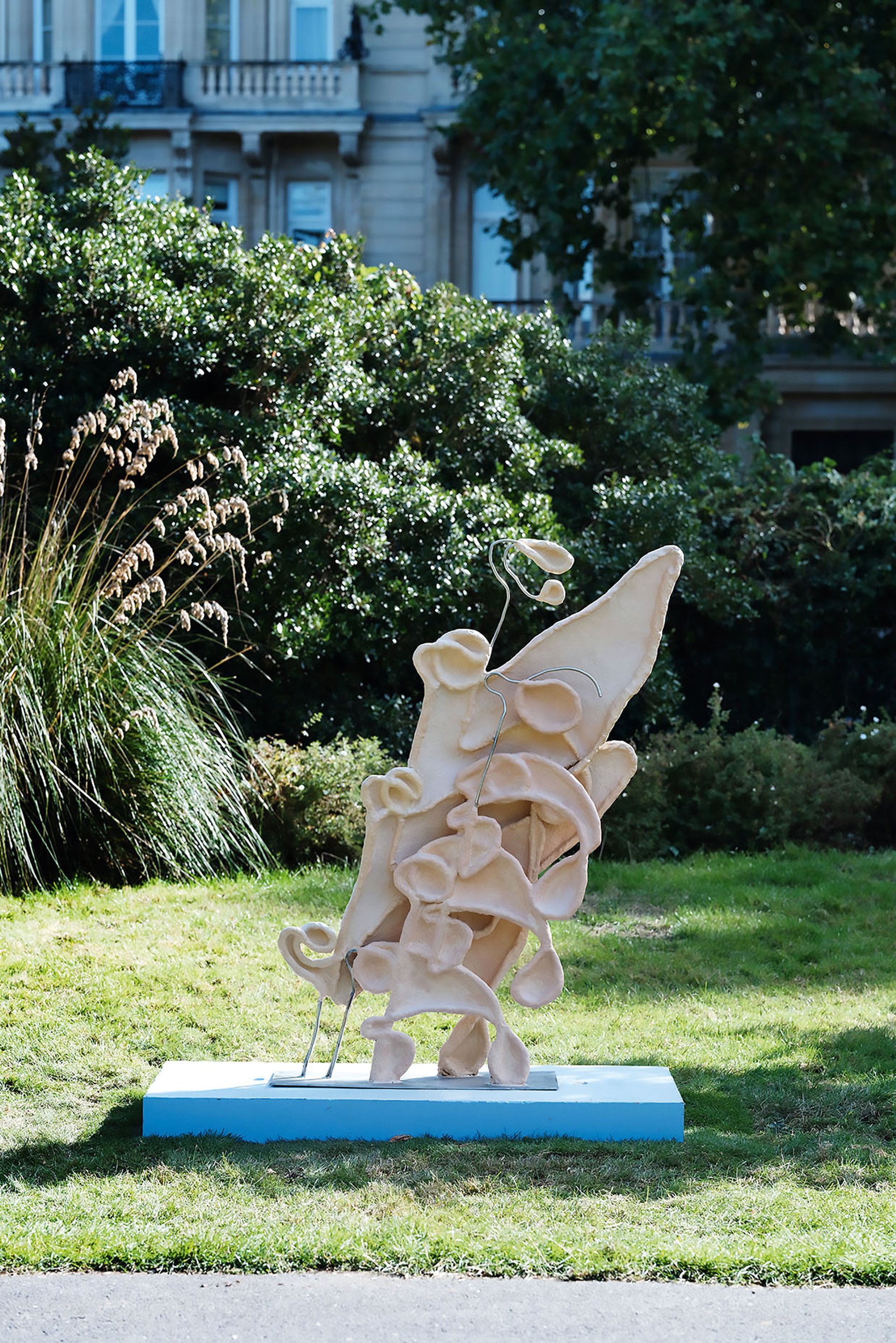
Juliana Cerqueira Leite, Shovel (2024) Linda Nylind/Frieze
Juliana Cerqueira Leite
Shovel (2024)
I always invite artists to propose a new work or respond to what is happening in the park. The three pieces that Cerqueira Leite did, from her series Repetitive Movements that Make and Unmake the World, are actually responding to the actions that happen in the park. This work is looking at shovelling. The other [two works] translate the movements of sanding a wall or buttoning up jeans, which could also happen in the park. At first she makes a drawing and that drawing informs the sculpture. It’s about blurring the boundary between everyday movements and the experience of art.

Zanele Muholi Bambatha I (2023) Linda Nylind/Frieze
Zanele Muholi
Bambatha I (2023)
Zanele Muholi currently has an exhibition at Tate Modern of their photography and activism [until 26 January 2025]. The work we have in the park is a self-portrait. It is the body of the artist surrounded by this malicious tubing, like a serpent running around their body. It looks like it is really suffocating them. It makes a reference to the fibroids that grew in their body [which caused health problems]. It also makes a reference to the suppressive forces against the LGBTQI+ community that they deal with on an everyday basis.

Albano Hernández, The Shadow (2024) Linda Nylind/Frieze
Albano Hernández
The Shadow (2024)
This gentle sculpture is formed of many pieces but also one piece, which is the shadow of a sweetgum tree. It is painted on to the grass with a biodegradable spray paint. The painted shadow matches the real shadow at around 10.30 in the morning. Hernández is a zero-based artist; he is very interested in the impact that we leave on the Earth, especially when we are engaged in a creative endeavour. So he wanted to make a sculpture that would have almost no trace. It is a really poetic piece. It is the easiest piece to miss this year because it is so subtle and ephemeral.
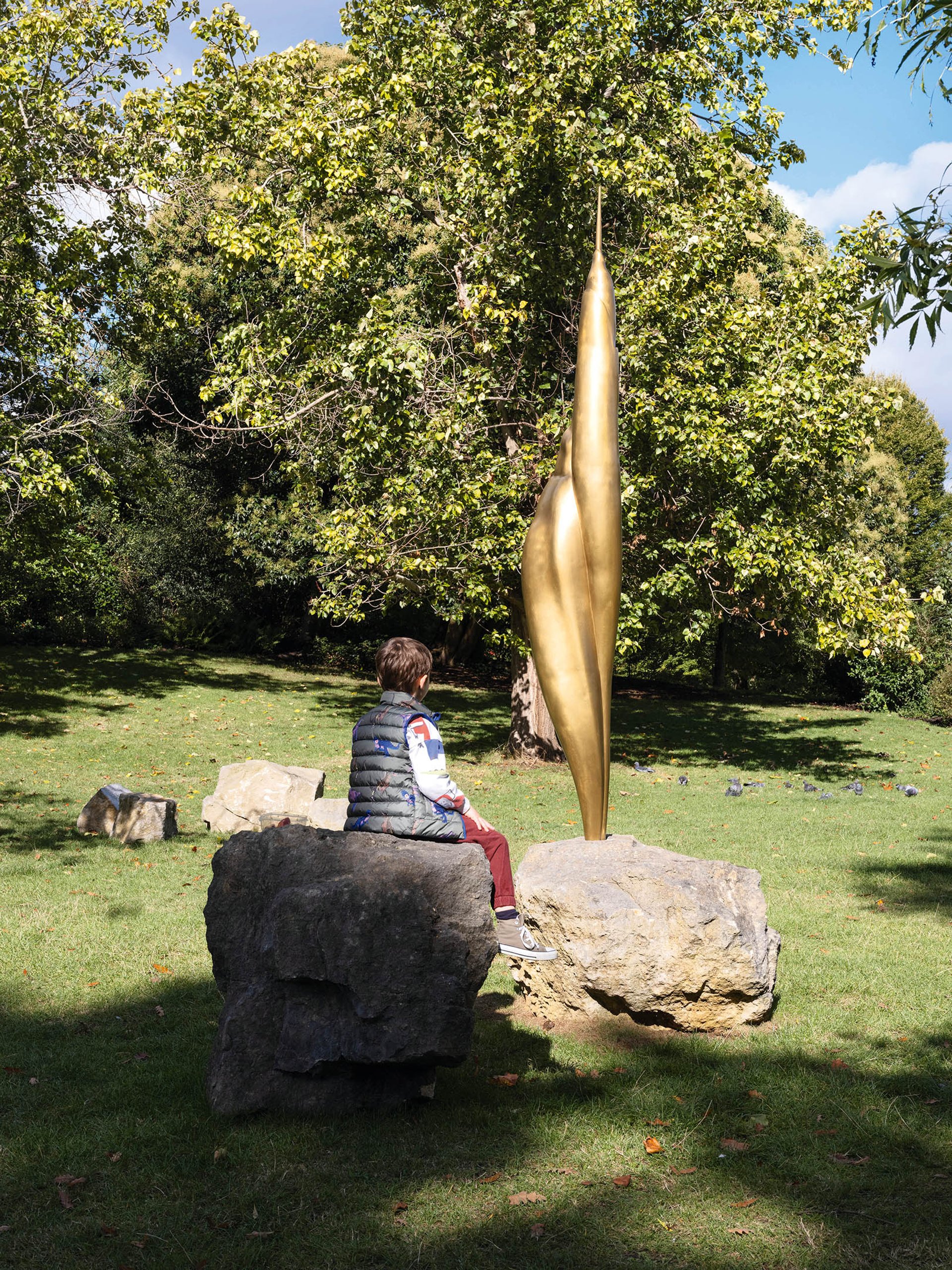
Kirstine Roepstorff, Lightning Rod (2024) Linda Nylind/Frieze
Kirstine Roepstorff
Lightning Rod (2024)
Kirstine Roepstorff’s work is interesting because it makes the park dangerous! It is a lightning rod and if lightning hits the work, it can actually split the stone in two. It is a sculpture about energy and how we cultivate knowledge of the Earth through learning from the Earth, from each other, our ancestors and from nature. It also comes with a free Qigong class that happens everySunday at 11am [until 27 October]. Qigong is energy work—it’s about cultivating the energy from within, but also attuning yourself to the energies that surround you, of the Earth and the sky. It is one of four performances taking place throughout the week at Frieze Sculpture. Again, it is about blurring that experience of sculpture and the everyday.
• You can hear some of the artists talk about their work on the official audioguide, available via the Bloomberg Connects app


